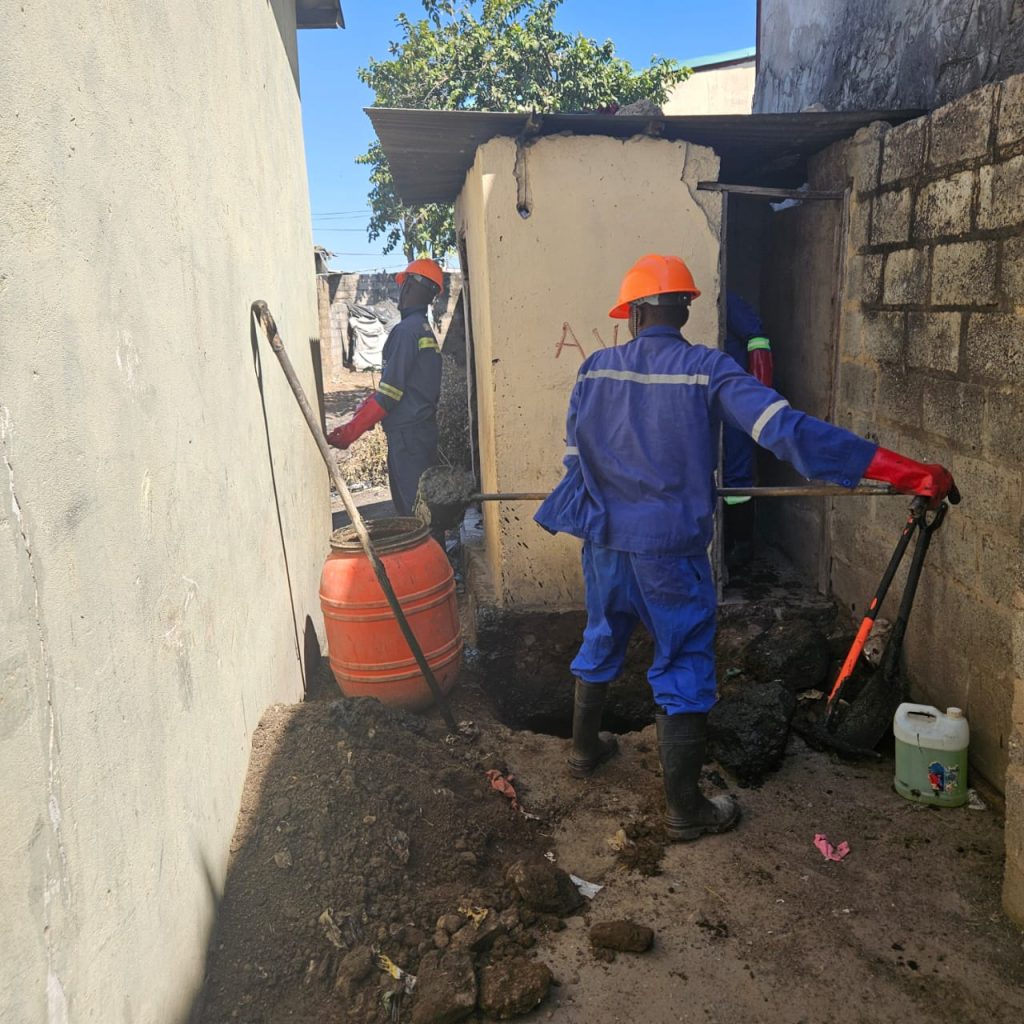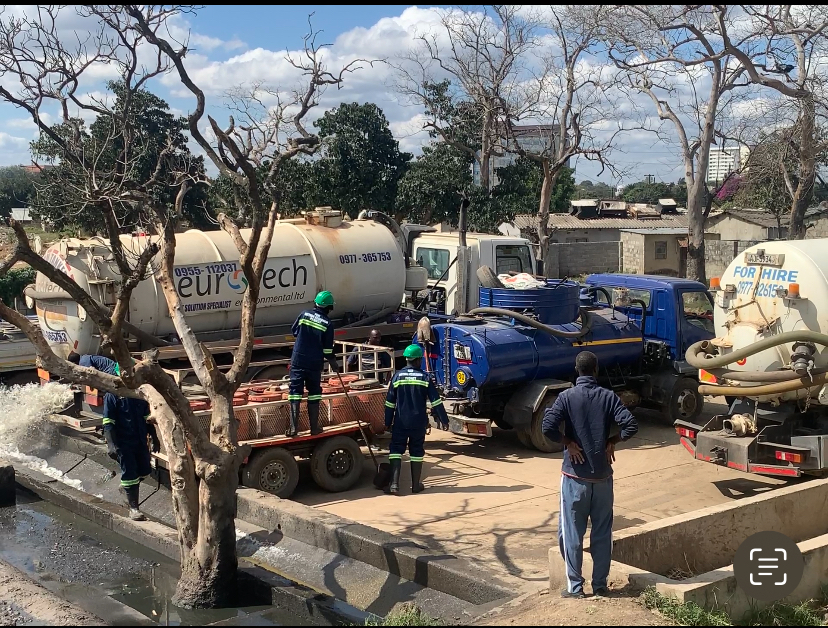FSM Policy Framework
Lusaka, Zambia.


Pit Emptying
Lusaka City’s SI on OSS does provide guidelines for safe and hygienic pit emptying. The city mandates that all pit emptying activities must be conducted by licenced service providers who follow established health and safety guidelines. Teams performing pit-emptying must use personal protective equipment (PPE) to safeguard their health. They should also be provided with uniforms for identification and to enhance their professional image. Different service levels are offered to accommodate various affordability levels. For example, partial emptying of pits at lower costs has been introduced to make the service more accessible. Technology guidelines simply state that mechanised technology should be used for emptying and transporting faecal sludge. However in many cases, especially in areas with limited access, manual tools like long-handled shovels are accepted for pit-emptying.
Subsidisation of FSM Services
Through the LSP programme, the LWSC currently subsidises the construction of improved facilities and the emptying of those facilities by manual and mechanical emptiers. However, the support from the World Bank and other LSP funders (e.g. BMGF, EIB, AfDB) will end with the LSP itself, at the close of 2024. LWSC, as a Commercial Utility, is assessed by the national regulator according to its financial and service viability; ongoing subsidisation of emptying without a clear strategy for sustainable funding is unlikely to be accepted by the regulator (or practical for LWSC to continue). The subsidy programs in Lusaka was designed to alleviate the financial burden of sanitation services for low-income households and also encourage uptake of these services by the community. The subsidy over the past 5 years has facilitated the construction and upgrading of sanitation facilities, achieving full participation from target households. For pit latrine emptying, the Lusaka Water and Sanitation Company (LWSC) offered a performance-based subsidy, reducing the household cost of emptying from K400/m3 to K250/m3. The subsidy will gradually decrease, aiming for households to cover the full cost by 2025. LWSC also plans to introduce prepaid onsite sanitation services to ensure regular maintenance and manageable costs for users.

City Plans to Change FSM Subsidy Policy
The rate at which the current subsidy is set is unlikely to be continued without external financing, unless the regulator allows LWSC to use the ‘sanitation surcharge/levy’ as a partial substitute to cover some of the currently subsidised costs of services. To date, the sanitation surcharge is only supposed to be used as a source of revenue for infrastructure development, not service delivery. This may change if LWSC can demonstrate to the regulator that the subsidy can be used in a relatively sustainable manner going forward (i.e. if the FSM business plan for the city identifies how the surcharge can reduce operational costs or increase LWSC income streams, etc.)
Plans to Move From Demand Responsive Services to Scheduled Services,
LWSC is interested in moving towards scheduled desludging. Currently, a scheduled desludging pilot programme is underway for approximately 4 000 toilets constructed under Lusaka Sanitation Programme – these were constructed to be emptiable and the majority are watertight due to the high water table, so fill up quickly. The ambition is to scale up scheduled desludging beyond the ‘LSP toilets’ once the model is evaluated, with LWSC playing a facilitator role with the private sector.
Policies On Pit Emptying
Lusaka currently does not have any restrictions on technologies to be used for emptying, but rather emphasises that the technology and practice adheres to safety and safeguarding of public health. ZEMA’s Health and Safety guidelines discourage unhygienic faecal sludge transfer in public areas (e.g. emptying full sludge barrels into a tank) while the LCC’s public health guidelines emphasis on adherence to safe emptying to safeguard public health.
Incentives on the construction of improved containment systems
NWASCO awarded LWSC the right to use a sanitation levy (collected as 2.5% of the water bills) for sanitation improvements in the peri-urban areas and to offset the costs of less profitable sanitation activities. This also includes water supply projects that could benefit the sanitation situation. NWASCO and LWSC are currently in discussion about allowing LWSC to use the sanitation levy to subsidise ongoing emptying services (as opposed to funding one-off infrastructure projects, for which NWASCO originally intended the levy).
